The Nurturing Benefits of Handwork
People feel most alive when they are fully immersed in an activity
Sitting in a chair, hunched over and knitting, is one of the most stereotypical images used to portray older women. Some view this as a negative image, implying that knitting is a simple hobby used to pass the time in one's later years. However, here’s what makers know: using our hands to create tangible items is one of the most beneficial activities people can do for their well-being.
Creative handwork, defined as work done by hand, encompasses a diverse array of activities and mediums, including knitting, crocheting, whittling, quilting, sculpture, pottery, embroidery, painting, sewing, weaving, drawing, jewelry making, and beading. Before industrialization, most people used their hands to create the essential items they needed for their daily lives. In Europe during the Middle Ages, guilds of craftsmen and merchants moved handwork into the market. Basket makers, blacksmiths, potters, hatters, and weavers served as both a means to sell and buy necessities and a training opportunity via apprenticeship for younger people.
Today, handwork has evolved into the realm of leisure, a hobby pursued after our daily work is completed. Most of us likely learned the basics of handwork as a child from a family member; some pursued it, while others didn’t. My early handwork was knitting and crocheting after my mom showed me the basics. I went through periods of daily handwork, mostly crocheting. I made baby blankets, booties, toddler sweaters, scarves, and for several years, crocheted snowflakes, which I gave as gifts. A few years ago, a long-lost friend sent a photo of a snowflake on her Christmas tree that I had gifted her almost forty years ago!
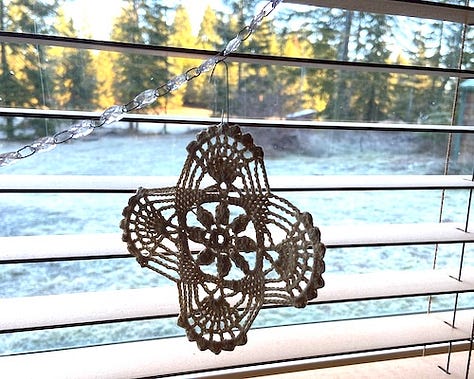
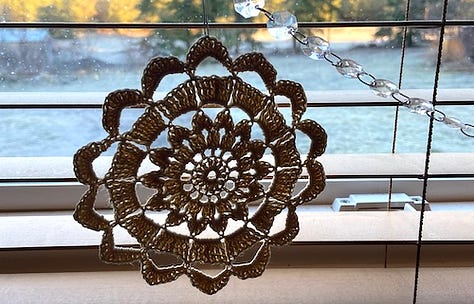

In later years, I pursued basketweaving, taking weekend workshops and attending basketry conferences. Over the last five years, I returned to knitting and crocheting, utilizing YouTube, yarn shops, websites, and books to develop my skills. During the past five months, knitting has helped me weather the anxiety and chaos of the world. In an increasingly stressful world, creative handwork has a calming effect.

Whether we are consciously aware of it or not, we experience cathartic and therapeutic effects from working on creative projects and engaging in handwork. Psychologist Mihaly Csikszentmihalyi, who applied the concept of flow theory to human activity, asserted that people feel most alive when they are fully immersed in an activity. This immersion requires our full attention as we learn and practice our handwork.
"The best moments usually occur if a person’s body or mind is stretched to its limits" ~Mihaly Csikszentmihalyi
In her book, The Zen of Knitting, Bernadette Murphy interviewed knitters who described knitting as a meditative and spiritual experience. Admittedly, learning a new skill can test our patience, and sometimes an advanced project can initially cause frustration and disappointment (I had to restart a recent knitting project five times before I got it right). However, if pursued and completed, it can offer a sense of pride and accomplishment. Once skills are in place, crafting simple projects with repeated patterns can be a mindless effort—a flow of rhythmic movements that are calming.
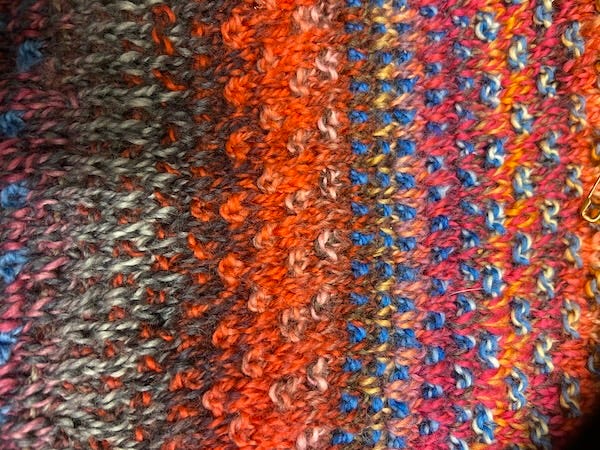
Benefits of Handcrafting
Using our hands to create things also means we are using our brains. Studies show it is a great way to quiet the mind. Research supports what my personal experience has demonstrated: handwork has multiple immediate and long-term benefits.
Cognitive
Increased connectivity between different brain regions linked to our ability to focus, attention span, problem-solving, and memory.
Pattern recognition creates new neural connections, boosting mental agility.
A sense of well-being that is calming and similar to the effects of mindfulness meditation due to the release of brain chemicals during the process
Repetitive motions can trigger a relaxation response, which can reduce stress levels, lowering blood pressure, decreasing heart rate, and decreasing cortisol production.
Psychological
Making something tangible contributes to a sense of accomplishment and enhanced confidence.
Creating handcrafted gifts for people who value them cultivates kindness.
Pursuing projects and developing advanced skills helps foster persistence in problem-solving.
Physical
Some handwork can help with our body’s movement & coordination.
Handwork can improve the dexterity of fine motor skills, relieving stiffness.
Community Benefits
There can also be social benefits. Historically, handwork brought people together; informal quilting bees, knitting circles, and barn raisings connected communities. In the 21st century, we have become increasingly isolated, and despite having 24/7 digital connections, we report feeling lonely. Developing a creative outlet with like-minded individuals who share your interests can bring significant benefits to your life.
I was thrilled to meet a new friend (on Substack) who lives three hours away. We discovered that we shared a love of similar books, hiking, writing, and knitting. On a recent visit, we stopped at an alpaca farm, took photos of the baby alpacas, and then headed to the farm store, where we practically ran to the table with naturally colored alpaca yarn. We had purchased the same shawl pattern, and we spent 30 minutes examining the soft alpaca yarn, deciding on our color choices. Sharing the experience with someone who understood my passion for yarn produced a sense of kinship.
Thank you for being here. All of my posts are free, but if you’d like to support my work, you can do so by:
Liking and restacking this post so others are encouraged to read it.
Share this post via email or on social media.
Subscribing to a paid plan on this Substack.
I would love to hear from you! Do you do handwork? Do you find similar benefits?
Check out my About page to learn more about me, my writing, and subscriber benefits.
https://suekusch.substack.com/about
I maintain a linked index of my Substack articles here.
Welcome to the Creative Late Bloomers Community - Go Ahead and Dive In
Below is an indexed list of my writing on Creative Late Bloomers. If you haven’t already done so, please read my About Page to learn more about me and my writing.






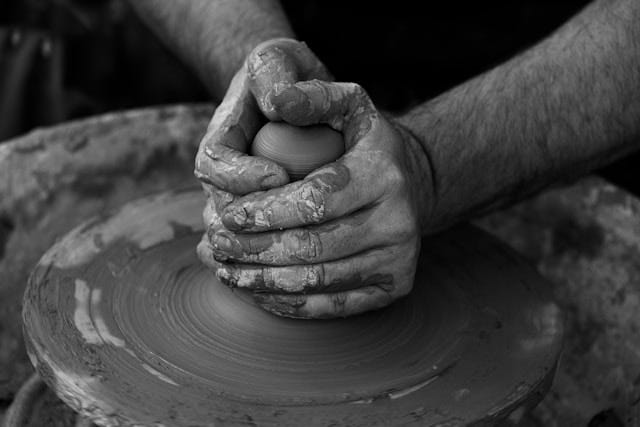
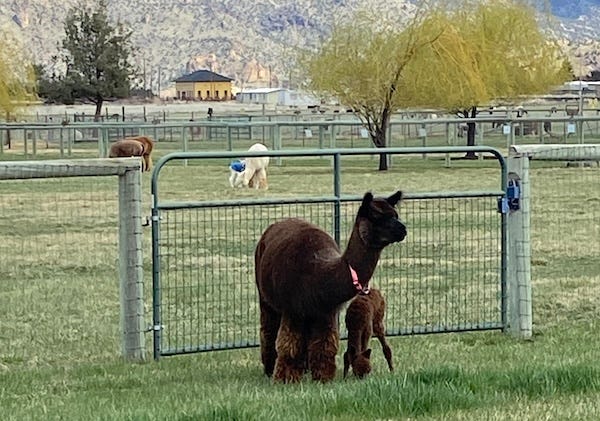


Your list of the benefits of handwork is enlightening, Sue. I think it all applies to gardening too, which is my handwork these days. And what lovely serendipity that you met a friend on Substack who lives near enough that you can meet for farm visits and yarn-buying excursions! Blessings to you as you find your way in these difficult times.
I find my relatively new hobby of weaving to be meditative -- when the warp is on the loom and I'm weaving! Getting the warp on the loom must be the "keeping the brain sharp" part. My late partner was a wood carver. I remember going to his workshop to tell him dinner was ready, and he was carving intently. I stood inches from his elbow and watched awhile, then went back to put dinner on hold. Later I found he had no idea I'd been there watching him! Flow. Thanks for another good post.